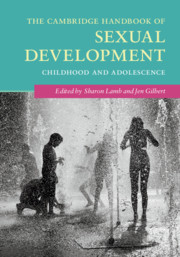Book contents
- The Cambridge Handbook of Sexual Development
- The Cambridge Handbook of Sexual Development
- Copyright page
- Contents
- Notes on Contributors
- Acknowledgments
- Introduction
- Part I What Is Sexual Development?
- Part II How Do We Study Sexual Development?
- Part III Media, Family, Education
- Media
- 20 Entertainment Media’s Role in the Sexual Socialization of Western Youth
- 21 Adventure, Intimacy, Identity, and Knowledge
- 22 A Sociological/Psychological Model for Understanding Pornography and Adolescent Sexual Behavior
- 23 Young People, Pornography, and Gendered Sexual Practices
- Family
- Education
- Index
- References
20 - Entertainment Media’s Role in the Sexual Socialization of Western Youth
A Review of Research from 2000–2017
from Media
Published online by Cambridge University Press: 27 December 2018
- The Cambridge Handbook of Sexual Development
- The Cambridge Handbook of Sexual Development
- Copyright page
- Contents
- Notes on Contributors
- Acknowledgments
- Introduction
- Part I What Is Sexual Development?
- Part II How Do We Study Sexual Development?
- Part III Media, Family, Education
- Media
- 20 Entertainment Media’s Role in the Sexual Socialization of Western Youth
- 21 Adventure, Intimacy, Identity, and Knowledge
- 22 A Sociological/Psychological Model for Understanding Pornography and Adolescent Sexual Behavior
- 23 Young People, Pornography, and Gendered Sexual Practices
- Family
- Education
- Index
- References
Summary
- Type
- Chapter
- Information
- The Cambridge Handbook of Sexual DevelopmentChildhood and Adolescence, pp. 395 - 418Publisher: Cambridge University PressPrint publication year: 2018
References
- 2
- Cited by



